Earth Science CET (Space)
1/50
There's no tags or description
Looks like no tags are added yet.
Name | Mastery | Learn | Test | Matching | Spaced |
|---|
No study sessions yet.
51 Terms
The earth’s natural satellite
Moon
Diameter of the moon:
About 3,474 km (2,159 miles)
Distance of the moon from Earth:
Approximately 384,400 km (238,855
miles).
The Moon’s gravity causes ___ on Earth.
Tides
Its surface is covered with craters, mountains, and maria
(large, dark basaltic plains).
Moon
The Moon rotates on its axis once in about ____, the same
amount of time it takes to orbit the Earth. This results in the
same side of the Moon always facing Earth.
27.3 days
They are determined by its position relative to
the Earth and the Sun. As the Moon orbits Earth, different portions
of its surface are illuminated by the Sun, resulting in the changing
phases.
The phases of the Moon
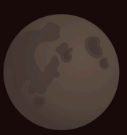
New Moon
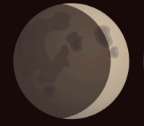
Waxing Crescent
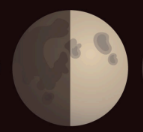
First Quarter
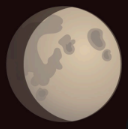
Waxing Gibbous
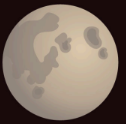
Full Moon
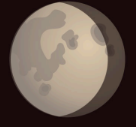
Waning Gibbous
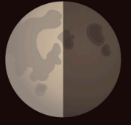
Last Quarter
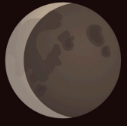
Waning Crescent
They are astronomical events that occur when one celestial
body moves into the shadow of another celestial body. There
are two primary types of eclipses that involve Earth and its
closest celestial neighbors: solar eclipses and lunar eclipses.
Eclipses
This occurs when the Moon passes
between the Earth and the Sun, blocking all or part of the Sun's
light.
Solar Eclipse
Types of Solar Eclipse
Total Solar Eclipse
Partial Solar Eclipse
Annular Solar Eclipse
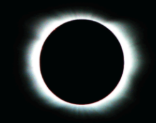
Occurs when the Moon completely covers the Sun, as
viewed from Earth. This can only happen when the Moon is
close enough to Earth in its elliptical orbit to appear larger
than the Sun in the sky.
The sky darkens as if it were night, stars and planets
become visible, and the Sun’s corona (outer atmosphere)
becomes visible as a halo around the Moon.
The area on Earth's surface where the total eclipse is
visible. This path is typically about 100 miles wide.
Total Solar Eclipse
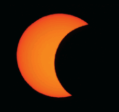
Occurs when only a part of the Sun is obscured by the
Moon. This happens when the Sun, Moon, and Earth are not
perfectly aligned.
The Sun looks like it has a “bite” taken out of it. The amount
of the Sun that is covered can vary greatly.
Partial Solar Eclipse
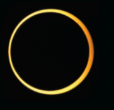
Occurs when the Moon is too far from Earth to completely
cover the Sun. The result is a ring of the Sun's surface,
known as the "ring of fire," remaining visible around the
Moon.
A bright ring or annulus around the dark disk of the Moon.
Annular Solar Eclipse
Solar eclipses occur during the new moon phase when the Sun,
Moon, and Earth are aligned in a straight line, known as?
Syzygy
The central, darkest part of the shadow where the
Sun is completely obscured. an observer within the umbra
experiences a total occultation
Umbra
The viewer only sees the outer part of the
shadow where the Sun is partially obscured
Penumbra
The area beyond the umbra where the Sun and
Moon appear as concentric disks during an annular eclipse.
Antumbra

Penumbra
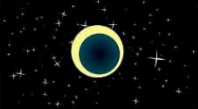
Antumbra
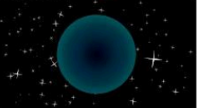
Umbra
This occurs when the Earth passes
between the Sun and the Moon, casting a shadow on the
Moon.
Lunar Eclipses
Types of Lunar Eclipses:
Total Lunar Eclipse
Partial Lunar Eclipse
Penumbral Lunar Eclipse
Occurs when the entire Moon passes through Earth's
umbra. The Moon takes on a reddish color due to Rayleigh
scattering of sunlight through Earth's atmosphere, often
called a "blood moon."
The Moon gradually darkens and turns red or coppery.
Total Lunar Eclipse
Occurs when only a portion of the Moon passes through
Earth's umbra. Part of the Moon appears darkened.
A segment of the Moon is noticeably darker than the rest.
Partial Lunar Eclipse
Occurs when the Moon passes through Earth's penumbra.
This type of eclipse is subtle and can be difficult to observe
because the shading is faint.
The Moon appears slightly shaded.
Penumbral Lunar Eclipse
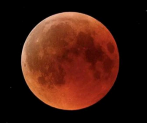
Total

Partial
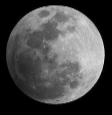
Penumbral
The streak of light produced when a meteoroid enters
the Earth's atmosphere and burns up.
Meteor
A small rocky or metallic body traveling through
space.
Meteoroid
A meteoroid that survives its passage through the
Earth's atmosphere and lands on the Earth's surface.
Meteorite
An icy body that releases gas or dust. Comets typically
have a visible coma (a fuzzy outline) and sometimes a tail when
near the Sun.
Comet
A small rocky body that orbits the Sun, primarily
found in the asteroid belt between Mars and Jupiter.
Asteroid
Officially designated 1P/Halley, is one of the
most famous and well-studied comets. The comet is named
after Edmond Halley, an English astronomer who, in 1705,
predicted that the comet observed in 1531, 1607, and 1682
would return in 1758. His prediction was based on calculations
of its orbit, proving it to be a periodic comet.
Halley's Comet,
Halley's Comet has an orbital period of approximately ____
years, meaning it returns to the inner solar system roughly
every _____ years.
75-76
Halley’s Comet has a ______ that takes it from just inside the
orbit of Venus to beyond the orbit of Neptune.
Highly elliptical orbit
It is a region of space between the orbits of
Mars and Jupiter that contains a vast number of small rocky
bodies, known as asteroids.
Asteroid Belt
The largest asteroid in the belt is _____, which is also
classified as a dwarf planet. _____ is the second-largest
asteroid.
Ceres
Vesta
His massive gravity exerts a strong gravitational
influence on the asteroids in the asteroid belt. This
influence can alter the orbits of these objects, preventing
some from colliding with Earth. This gravity disrupts the
formation of a planet in the belt.
Jupiter
Types of Asteroid:
C-type (Carbonaceous)
S-type (Silicaceous)
M-type (Metallic)
The most common type,
containing a lot of carbon and silicate minerals.
C-type (Carbonaceous)
Composed mainly of silicate minerals
and metal.
S-type (Silicaceous)
Primarily made of metallic iron and
nickel.
M-type (Metallic)